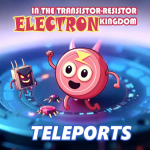Light-emitting diodes (LEDs): Emit bright photon beams that can blind an electron.
17 Oct 2024
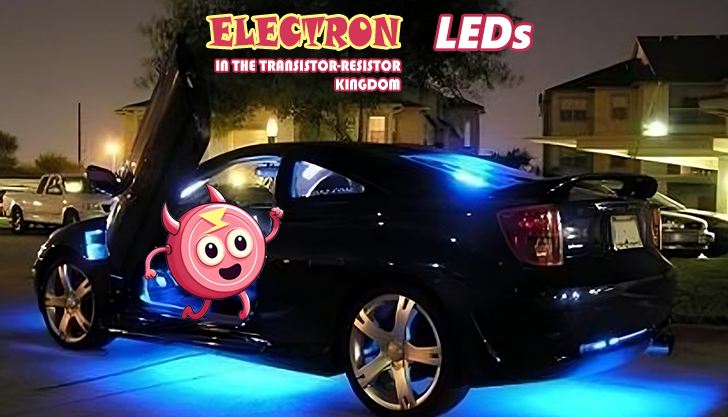
Light-emitting diodes (LEDs) are semiconductor devices that convert electrical energy into light. They are widely used in a variety of applications, from lighting to displays, due to their energy efficiency and durability. All this you can try in game.
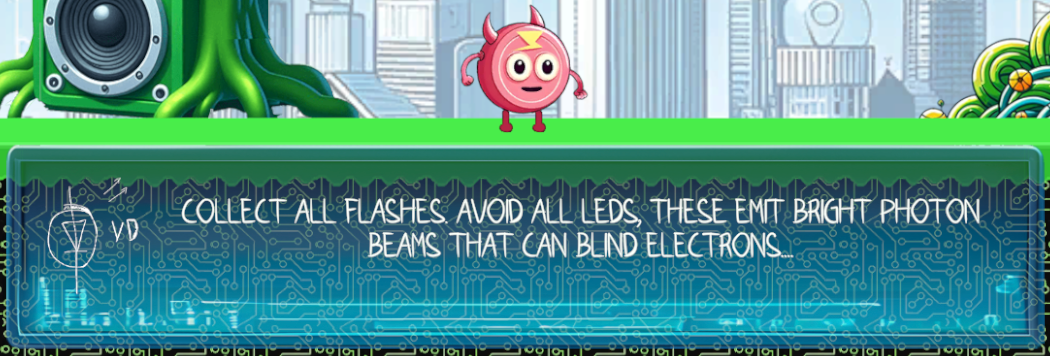
How an LED Works:
Semiconductor Material: LEDs are made of semiconductor materials, usually silicon or gallium arsenide.
P-N Junction: When voltage is applied to the p-n junction, electrons and holes recombine, releasing energy in the form of photons, or particles of light.
Light Emission: The greater the electrical current through the LED, the more recombinations there are and, consequently, the more light is emitted.
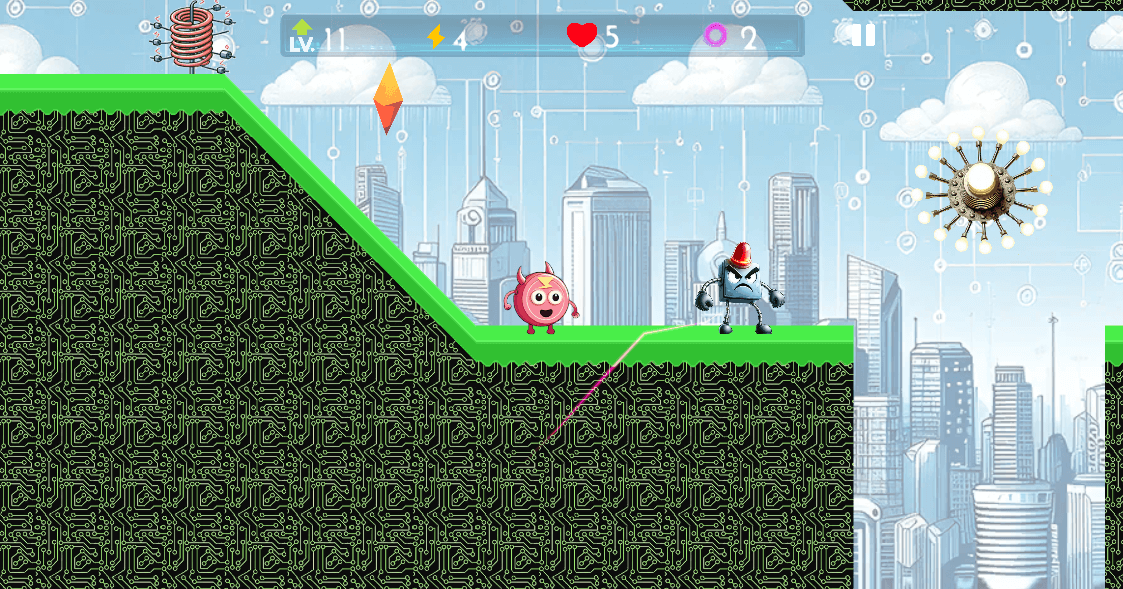
Brightness and Hazards:
Bright Light: Modern LEDs can emit very bright light. The light emitted by LED devices can be so intense that looking directly at the LEDs without proper protection can cause eye damage or temporary blindness.
Intense Radiation: Some LEDs, especially those used in industrial and specialized applications (lasers, floodlights), can produce very concentrated light. This radiation can be so powerful that its impact on the eye causes both short-term and long-term retinal damage if looked at without protection.
How LED Light Can Damage Your Eyesight:
Blue LEDs: Blue light is considered the most dangerous to the eye because high-energy photons can penetrate deeper into the eye tissue, which can lead to retinal degeneration.
Direct Staring: Long-term exposure to high-power LEDs can cause photochemical eye damage. Looking at LEDs used in floodlights or flashlights is especially dangerous.
Precautions:
Avoid looking directly at bright LEDs, especially blue or ultraviolet ones.
Use safety glasses when working with high-power LEDs or near bright LED light sources.
Adjust your lighting: When using LED lamps to illuminate a room, avoid excessively bright sources that are aimed directly at the eyes.
Flickering LEDs: Rapidly flickering light from LEDs can cause discomfort and irritation to the eyes, and in rare cases, even epileptic seizures in people who are sensitive to light.
Although LEDs are one of the safest light sources in terms of energy consumption and longevity, you should be aware of the potential risks to the eyes if they are used incorrectly.
LEDs types
LEDs come in different types depending on their shape, size, purpose, and characteristics. Here are the main types of LEDs:
1. By color of light:
Single-color: LEDs that emit light of one color (e.g. red, green, blue).
Multi-color (RGB): can change color by combining red, green, and blue.
White: produces white light, usually used for lighting.
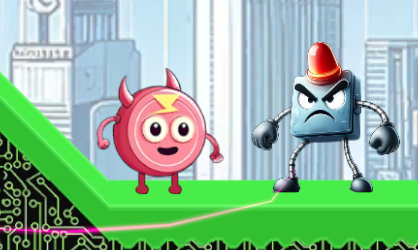
2. By design and housing:
Spot (standard): the most common small LEDs (3 mm, 5 mm), often in a plastic housing.
SMD (surface mount): compact, mounted on the surface of the board, have a high level of brightness. Examples: 2835, 5050, 5630.
COB (Chip on Board): crystals are placed directly on the board, which allows for high brightness with minimal heating.
PLCC: used in displays and panels, have high brightness and durability.
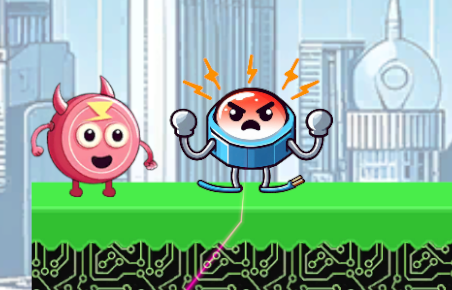
3. By power:
Low-power: less than 0.5 W, used for indication.
Medium-power: from 0.5 to 1 W, used in screen backlighting and some types of lighting.
High-power: from 1 W and above, used in powerful lighting devices.
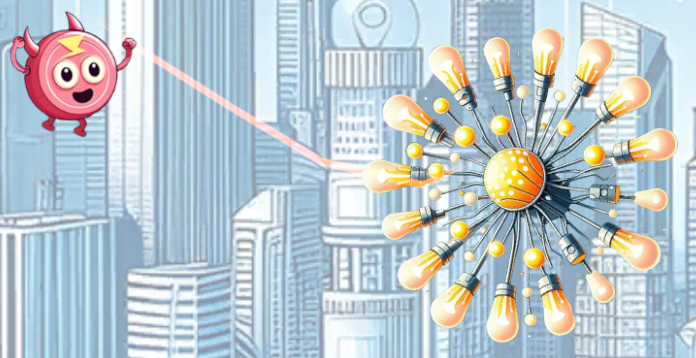
4. By type of radiation:
Infrared (IR): emit in the infrared range, used in remote controls.
Ultraviolet (UV): emit in the ultraviolet spectrum, used for disinfection or special effects.
5. By light direction:
Directional: emit light at a narrow angle (from 10° to 60°).
Diffuse: create light with a wide scattering angle (usually more than 100°).

6. By voltage and current:
Low-voltage: operate from low voltage (2-3 V), require resistors or drivers for operation.
High-voltage: can operate from higher voltage, such LEDs are used in powerful lamps.
7. By application:
Indication: used to display information (on instrument panels, indicators).
Lighting: used in household and industrial lighting.
Decorative: used in advertising, architectural lighting and design.
Each type of LED has its own advantages depending on the application.

LEDs application
LEDs are widely used in various fields due to their energy efficiency, durability and compactness. Here are the main areas of application of LEDs:
1. Lighting:
Household lighting: LED lamps replace traditional incandescent and fluorescent lamps in homes, apartments and offices.
Street lighting: used in street lamps and lighting fixtures, providing bright and economical light.
Architectural lighting: LEDs are used for decorative lighting of buildings, monuments and bridges.
Industrial lighting: for lighting production facilities, warehouses and parking lots.
2. Displays and screens:
TVs and monitors: LEDs are used to backlight LCD screens and in OLED screens.
Advertising signs: LED displays and billboards are widely used for advertising in cities, on buildings and along roads.
Information boards: used in transport, at railway stations, at airports to display information.
3. Cars:
Headlights and taillights: LEDs replace traditional incandescent lamps in car headlights and brake lights.
Interior lighting: used to illuminate the dashboard, doorways and other elements of the car.
Daytime running lights (DRL): LED lamps are used to ensure the visibility of cars during the day.
4. Electronics and Appliances:
Indication: LEDs are used in devices to display the status of a device (such as buttons or control panels).
Display Backlighting: Used in smartphones, laptops, tablets, and other portable devices.
Remote Controls: Infrared LEDs transmit signals from remote controls to devices.
5. Medical:
Medical Lighting: LEDs are used in surgical lamps and devices to provide precise lighting during surgeries.
Phototherapy: LED devices are used to treat skin conditions (such as acne or psoriasis) and to regenerate skin cells.
Ultraviolet LEDs: Used to sterilize instruments and disinfect surfaces.
6. Traffic Lights and Road Signs:
Traffic Lights: LEDs have replaced incandescent bulbs in traffic lights, providing a longer lifespan and saving energy.
Road Signs and Directional Signs: LEDs are used to create visible and bright road signs and directional signs, especially at night.
7. Agriculture:
LED plant lighting: special LED lamps are used in greenhouses and farms to stimulate plant growth.
Ultraviolet LEDs: can be used to kill pests or disinfect water and soil.
8. Entertainment and shows:
LED strips: used to create lighting effects on stage, in clubs, restaurants and at exhibitions.
Decorative elements: LEDs are used in New Year's garlands, art installations and design solutions to create various light compositions.
9. Virtual and augmented reality:
AR/VR devices: LEDs are used in virtual reality helmets to display bright and accurate images.
Holographic devices: in lighting effects to create three-dimensional images.
10. Scientific and industrial research:
Laser and optical systems: LEDs are used in scientific research for optical experiments, in spectrometers and analyzers.
Infrared LEDs: Used in night vision cameras and for temperature monitoring.
LEDs have become an important element in many areas, and their use continues to expand as technology advances.
Related games
Electron in the transistor-resistor kingdom
Game: Perform tasks and rest cool. 2574 people play!
Play gameRelated news
Online broadcast about the game Electron in the Transistor-R...
broadcast about the game Electron in the Transistor-Resistor Kingdom
Read morePlatforms in the game Electron in the Transistor-Resistor Ki...
Platforms are the basic game elements in the platformer genre. They are surfaces or objects on which the player can move...
Read moreTeleport as a device for moving matter in space and time
This is a high-tech device that can instantly move a player from one point in the game world to another using plasma tec...
Read more

